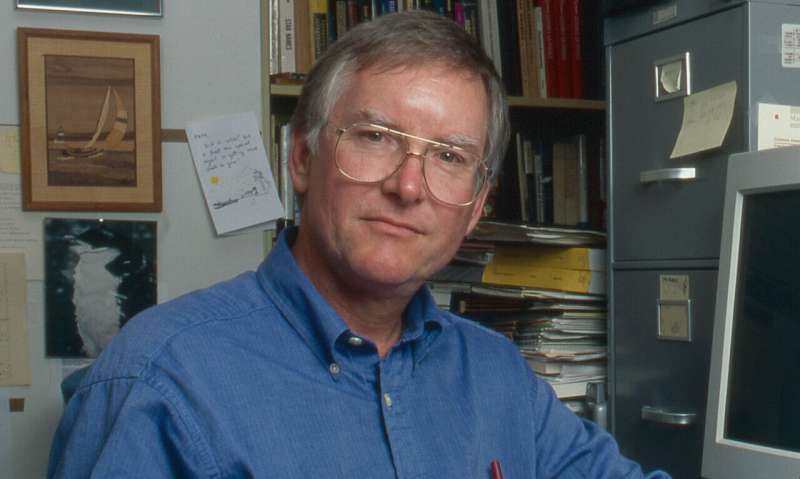New tricks from old data: Astronomer uses 25-year-old Hubble data to confirm planet Proxima Centauri c

Fritz Benedict has used data he took over two decades ago with Hubble Space Telescope to confirm the existence of another planet around the Sun's nearest neighbor, Proxima Centauri, and to pin down the planet's orbit and mass. Benedict, an emeritus Senior Research Scientist with McDonald Observatory at The University of Texas at Austin, will present his findings today in a scientific session and then in a press conference at a meeting of the American Astronomical Society.
Proxima Centauri has been in the news frequently since 2016, when scientists including McDonald Observatory's Michael Endl found its first planet, Proxima Centauri b. The discovery incited speculation on the types of in-depth studies that could done on an extrasolar planet so close to our own solar system.
Adding to the excitement, earlier this year a group led by Mario Damasso of Italy's National Institute for Astrophysics (INAF) announced they might have found another planet orbiting Proxima Centauri farther out. This group used radial velocity observations, that is, measurements of the star's motion on the sky toward and away from Earth, to deduce the possible planet (dubbed Proxima Centauri c) orbits the star every 1,907 days at distance of 1.5 AU (that is, 1.5 times the distance at which Earth orbits the Sun).
Still, the existence of planet c was far from certain. Thus Benedict decided to re-visit his studies of Proxima Centauri from the 1990s made with Hubble Space Telescope. For that study, he had used Hubble's Fine Guidance Sensors (FGS).
Though their primary role is to ensure accurate pointing of the telescope, Benedict and others routinely used FGS for a type of research called astrometry: the precise measurement of the positions and motions of celestial bodies. In this case, he used FGS to search for Proxima Centauri's motion on sky caused by tugging from its surrounding—and unseen—planets.
When Benedict and research partner Barbara MacArthur originally studied Proxima Centauri in the 1990s, he said, they only checked for planets with orbital periods of 1,000 Earth days or fewer. They found none. He now revisited that data to check for signs of a planet with a longer orbital period.
Indeed, Benedict found a planet with an orbital period of about 1,907 days buried in the 25-year-old Hubble data. This was an independent confirmation of the existence of Proxima Centauri c.
Shortly afterward, a team led by Raffaele Gratton of INAF published images of the planet at several points along its orbit that they had made with the SPHERE instrument on the Very Large Telescope in Chile.
Benedict then combined the findings of all three studies: his own Hubble astrometry, Damasso's radial velocity studies, and Gratton's images to greatly refine the mass of Proxima Centauri c. He found that the planet is about 7 times as massive as Earth.
This analysis shows the power of combining several independent methods of studying an exoplanet. Each approach has its strengths and weaknesses, but together they serve to confirm the existence of Proxima Centauri c.
"Basically, this is a story of how old data can be very useful when you get new information," Benedict said. "It's also a story of how hard it is to retire if you're an astronomer, because this is fun stuff to do!"
Provided by University of Texas McDonald Observatory




















